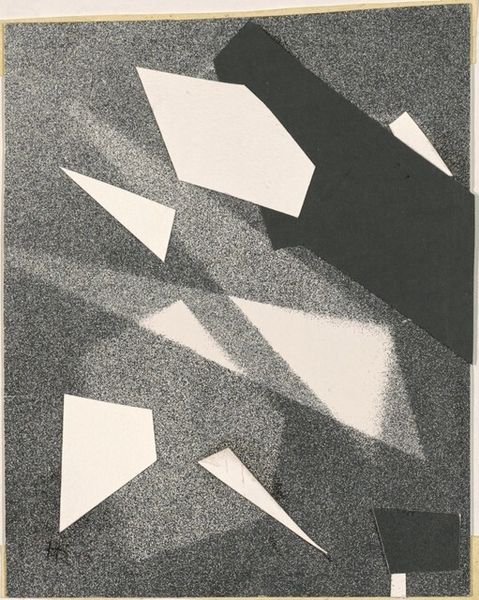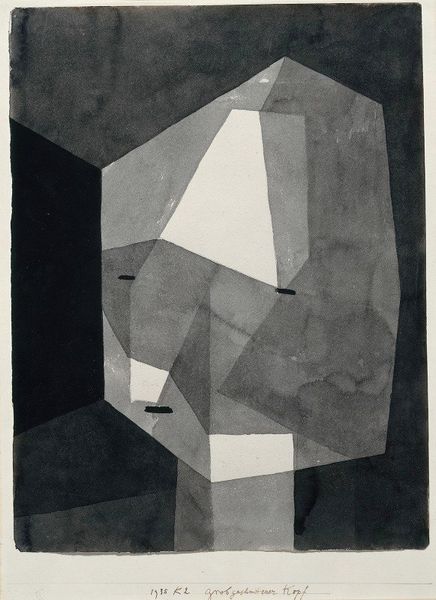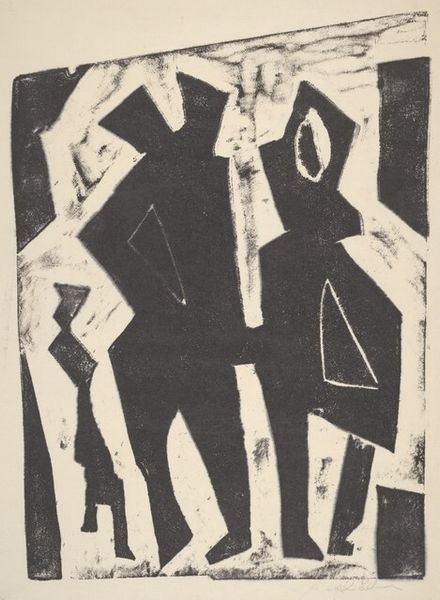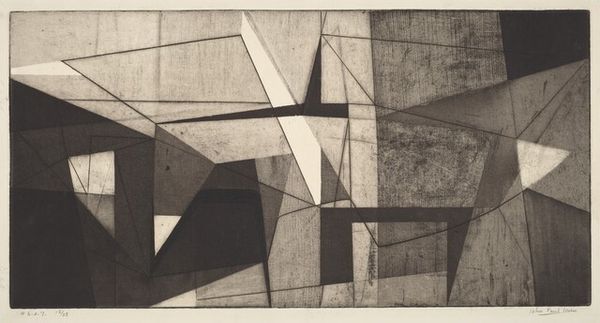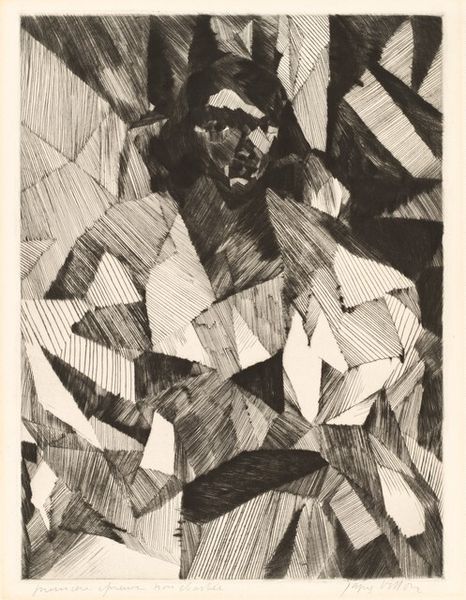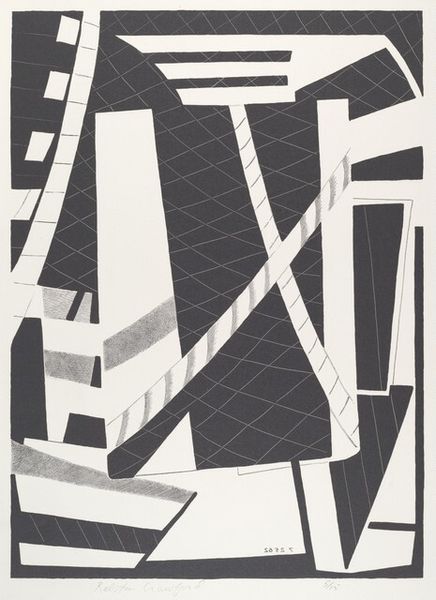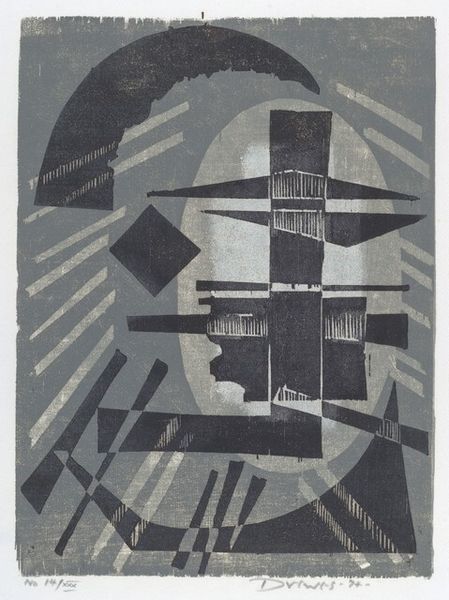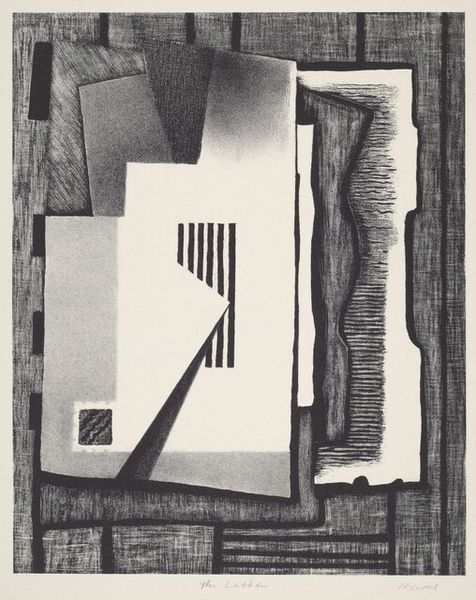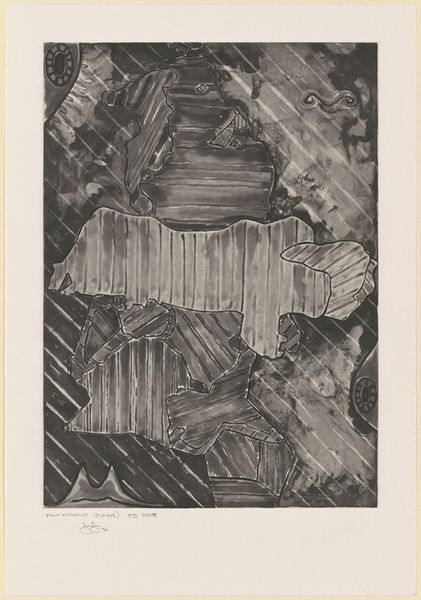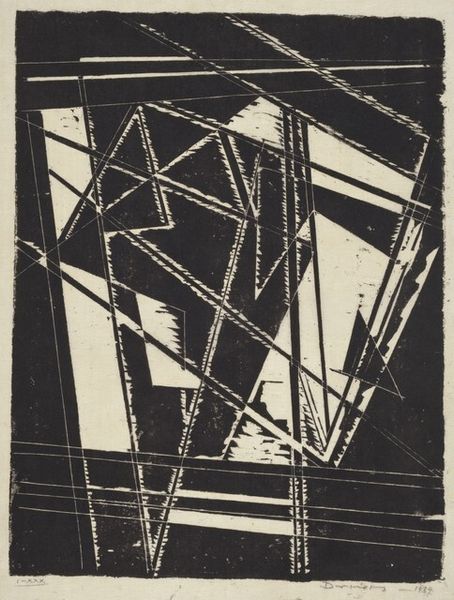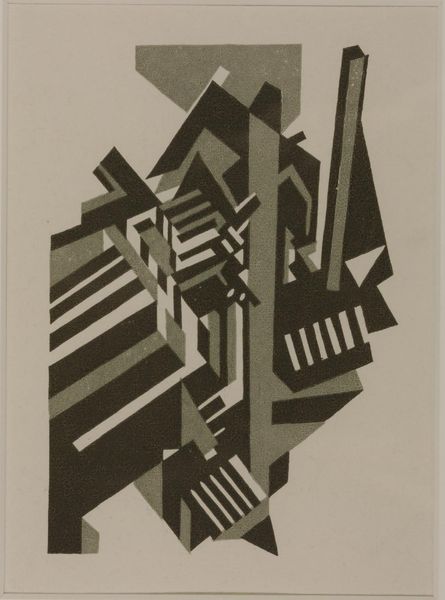
graphic-art, print
#
graphic-art
#
cubism
# print
#
geometric-abstraction
#
abstraction
#
monochrome
Dimensions: plate: 12.86 × 9.05 cm (5 1/16 × 3 9/16 in.) sheet: 27.31 × 21.75 cm (10 3/4 × 8 9/16 in.)
Copyright: National Gallery of Art: CC0 1.0
Curator: Jacques Villon's "Composition," created around 1946, strikes me as a study in contrasts—the interplay of light and shadow across geometric planes in this print feels very deliberate. Editor: It's stark. The monochrome palette gives it an austere feel. What exactly are we looking at, or rather, what were viewers meant to see? Curator: Villon was a key figure in the development of Cubism. "Composition" represents his mature exploration of geometric abstraction, taking the Cubist dissection of form and pushing it into almost pure non-representation. The graphic work, and others like it, became highly influential to later artists. Editor: Influential perhaps, but is it emotionally engaging? It feels cold. Curator: Well, think of it in the context of the post-war era. There's a sense of rebuilding, of creating new orders from fragments. This search for underlying structures was central to much artistic and intellectual thought then. Editor: Interesting. I see that—a pursuit of fundamental forms beyond easy visual interpretation. Curator: The arrangement creates a kind of tension too. Those shapes seem to press against each other, fighting for dominance within a defined space. It almost reads as an attempt to balance chaotic elements. Editor: So, is it resolved chaos or suspended potential? It invites the question of order versus chance. It pushes me to reflect on historical and theoretical connections. It reminds me how modernism shifted perspectives on abstraction and its role in dismantling conventions of representation and knowledge systems. Curator: It also brings up interesting discussions about value judgments placed on abstract work and how the art market operates. We want people to see and interpret, but the language to evaluate may be beyond some visitors' understanding. Editor: Exactly! And questioning those systems is valuable. It challenges not just what art *is*, but how it functions and communicates meaning within the art world and beyond. Curator: Indeed. It’s a work that perhaps asks more questions than it answers. Editor: Ultimately, "Composition" forces a critical examination of the structures of seeing, and the very frameworks shaping artistic interpretation and reception. It stays with you long after you turn away from the wall.
Comments
No comments
Be the first to comment and join the conversation on the ultimate creative platform.
